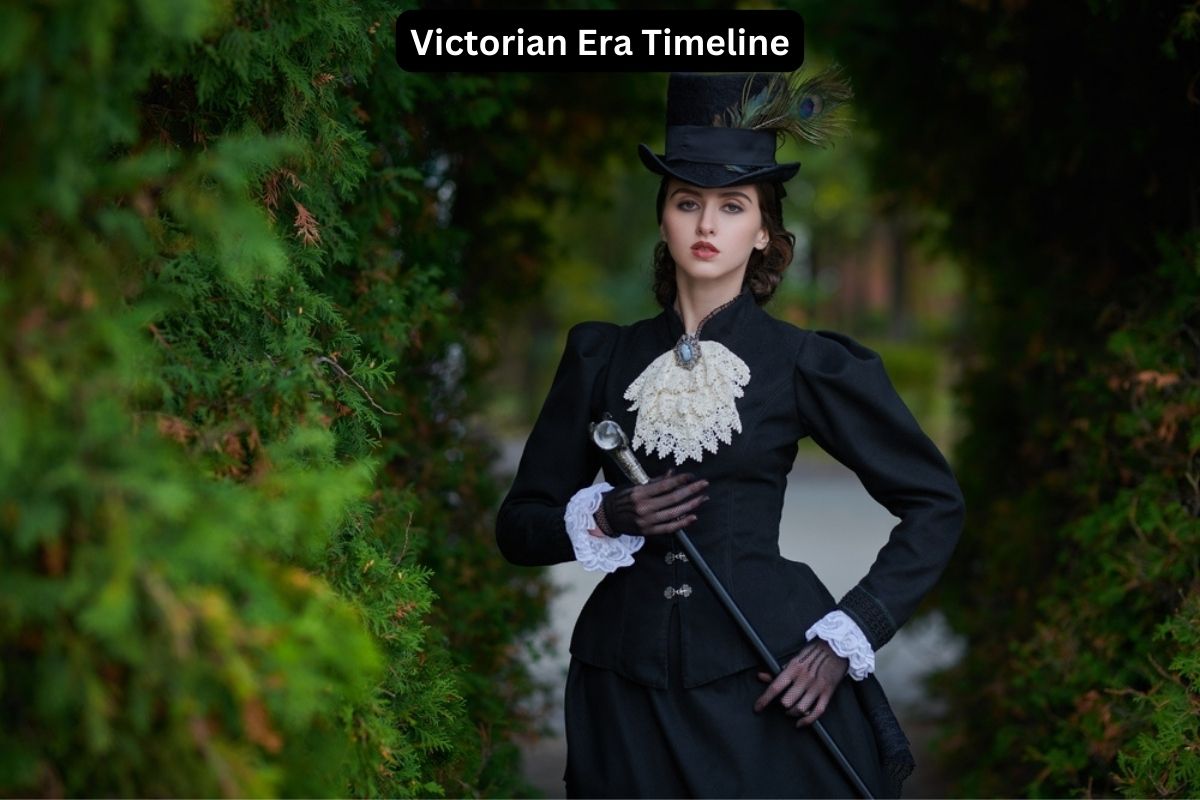The Victorian Era, spanning from 1837 to 1901 during the reign of Queen Victoria, stands as a pivotal period in British history. It was marked by a unique blend of significant social, cultural, and political changes.
From the industrial revolution and the expansion of the British Empire to groundbreaking scientific discoveries and social reform movements, the Victorian Era left an indelible mark on the world.
In this article, we delve into the key events and developments that defined this transformative period, shedding light on the fascinating history and legacy of the Victorian Era.
| Year | Event |
|---|---|
| 1837 | Queen Victoria ascends to the throne |
| 1838 | The Great Western Railway is completed |
| 1839-1842 | The First Opium War between Britain and China |
| 1840 | The Treaty of Waitangi is signed, establishing British sovereignty over New Zealand |
| 1842 | The Mines Act is passed, prohibiting women and children from working in coal mines in Britain |
| 1843 | Charles Dickens publishes “A Christmas Carol” |
| 1845-1852 | The Irish Potato Famine leads to mass emigration from Ireland |
| 1851 | The Great Exhibition is held in London’s Crystal Palace, showcasing industrial and technological advances |
| 1854-1856 | The Crimean War between Britain, France, and the Ottoman Empire against Russia |
| 1857-1858 | The Indian Rebellion, also known as the Indian Mutiny or Sepoy Mutiny, against British rule in India |
| 1859 | Charles Darwin publishes “On the Origin of Species,” introducing the theory of evolution |
| 1861 | Prince Albert, Queen Victoria’s husband, dies |
| 1863 | The London Underground, the world’s first underground railway, opens |
| 1867 | The Second Reform Act is passed, expanding voting rights in Britain |
| 1868 | William Gladstone becomes Prime Minister |
| 1870 | The Elementary Education Act, also known as the Forster Act, is passed, establishing elementary education for all children in England and Wales |
| 1871 | The Married Women’s Property Act allows married women to own property in their own right |
| 1876 | Queen Victoria becomes the Empress of India |
| 1880 | Benjamin Disraeli becomes Prime Minister for the second time |
| 1884 | The Third Reform Act is passed, further extending voting rights in Britain |
| 1897 | Queen Victoria celebrates her Diamond Jubilee, marking 60 years on the throne |
| 1901 | Queen Victoria dies, marking the end of the Victorian Era |
Timeline of the Victorian Era
1837: Queen Victoria ascends to the throne
On June 20, 1837, a young Queen Victoria ascended to the British throne at the age of 18, following the death of her uncle, King William IV.
Her reign marked the beginning of the Victorian Era, which would last for over six decades. Queen Victoria is known for her strong influence on British culture and society during this time.
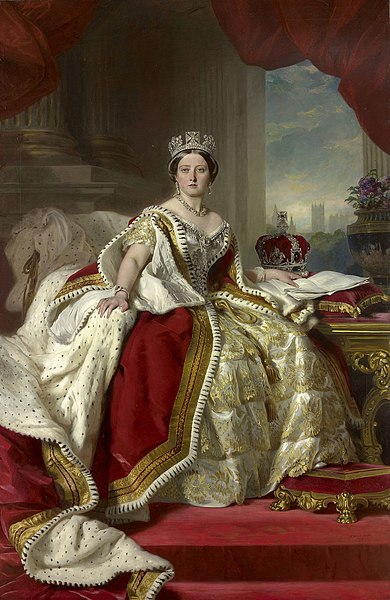
1838: The Great Western Railway is completed
The completion of the Great Western Railway in 1838 was a significant milestone in the development of transportation in Britain. Designed by renowned engineer Isambard Kingdom Brunel, this railway stretched from London to Bristol, revolutionizing travel and commerce.
Also Read: Facts About the Victorian Era
The introduction of railways played a vital role in connecting different regions of the country and facilitating the movement of goods and people.
1839-1842: The First Opium War between Britain and China
The First Opium War was a conflict between the British Empire and the Qing Dynasty of China. The primary issue was the British trade in opium, which was exported from India to China. Tensions arose when the Chinese government attempted to curb the opium trade.
Also Read: Queen Victoria Facts
The war ended with the Treaty of Nanking in 1842, which forced China to cede Hong Kong to Britain and open several ports for trade. This marked a significant chapter in the history of British imperialism in Asia.
1840: The Treaty of Waitangi is signed, establishing British sovereignty over New Zealand
The Treaty of Waitangi, signed on February 6, 1840, was a pivotal moment in New Zealand’s history. It was an agreement between representatives of the British Crown and Maori chiefs, aimed at establishing British sovereignty over New Zealand.
The treaty had two versions, one in English and one in Maori, and there were differences in interpretation between the two versions. This led to ongoing disputes over land rights and governance, resulting in conflicts and negotiations in the years that followed.
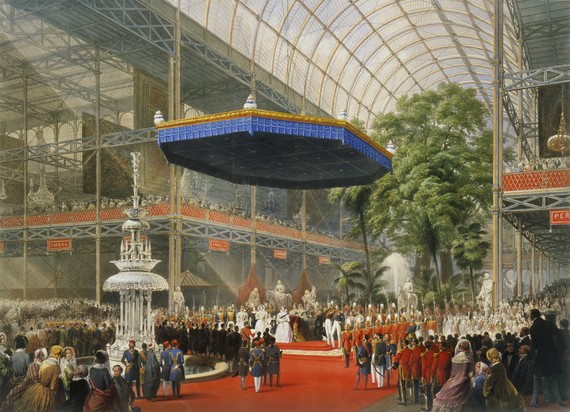
1842: The Mines Act is passed, prohibiting women and children from working in coal mines in Britain
The Mines Act of 1842 was a significant piece of legislation in Britain aimed at improving working conditions, particularly for women and children in coal mines. It prohibited women and children under the age of 10 from working underground in coal mines.
This law was a response to the horrific conditions and exploitation faced by workers, especially young children, in the coal mining industry during the early 19th century. The Mines Act marked an important step in the development of labor rights and child welfare in Britain.
1843: Charles Dickens publishes “A Christmas Carol”
Charles Dickens’ novella “A Christmas Carol” was first published in December 1843. This timeless and beloved work of literature tells the story of Ebenezer Scrooge, a miserly old man, who undergoes a transformation after being visited by three spirits on Christmas Eve.
The story not only became a classic Christmas tale but also highlighted social issues of the time, such as the plight of the poor and the importance of compassion and generosity. Dickens’ work had a significant impact on the way the Victorian society viewed the holiday season and charity.
1845-1852: The Irish Potato Famine leads to mass emigration from Ireland
The Irish Potato Famine, also known as the Great Famine or the Great Hunger, was a devastating period in Irish history that began in 1845. The famine was caused by a potato blight that destroyed the potato crop, which was a staple food for the Irish population.
Millions of people in Ireland faced starvation, and the effects of the famine led to a mass exodus of Irish immigrants to other countries, particularly the United States. The famine had a profound impact on Irish society, politics, and culture and left a lasting legacy.
1851: The Great Exhibition is held in London’s Crystal Palace, showcasing industrial and technological advances
The Great Exhibition of 1851, also known as the Crystal Palace Exhibition, was a groundbreaking event held in London’s Hyde Park.
Organized by Prince Albert, Queen Victoria’s husband, and designed by Joseph Paxton, the Crystal Palace was a stunning glass and iron structure that housed the exhibition.
The event showcased industrial and technological advances from around the world. It was a symbol of the Victorian era’s enthusiasm for progress and innovation, and it attracted millions of visitors.
The Great Exhibition laid the foundation for future world’s fairs and had a significant influence on design and industry.
1854-1856: The Crimean War between Britain, France, and the Ottoman Empire against Russia
The Crimean War was a major conflict fought on the Crimean Peninsula in Eastern Europe from 1854 to 1856. It pitted an alliance of Britain, France, and the Ottoman Empire against Russia. The war had various causes, including disputes over religious rights in the Holy Land, Russia’s expansionist ambitions, and concerns about the balance of power in Europe.
The war is most famous for the nursing work of Florence Nightingale, who improved medical care for wounded soldiers and established nursing as a respected profession. The war ended with the Treaty of Paris in 1856, which reshaped the map of Europe and marked a significant moment in European diplomacy.
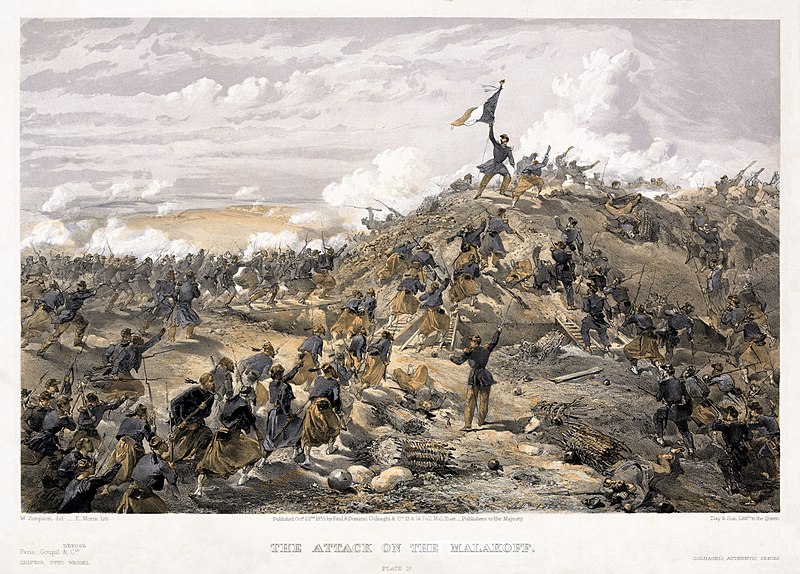
1857-1858: The Indian Rebellion, also known as the Indian Mutiny or Sepoy Mutiny, against British rule in India
The Indian Rebellion of 1857-1858, also known as the Indian Mutiny or Sepoy Mutiny, was a widespread uprising against British colonial rule in India.
The revolt had various triggers, including grievances among Indian soldiers (sepoys) over issues such as the use of animal fat in rifle cartridges and broader dissatisfaction with British rule. The rebellion spread across much of northern and central India and resulted in violent clashes.
Although it was ultimately suppressed by the British, the Indian Rebellion had a profound impact on India’s struggle for independence. It led to changes in British policies and marked the beginning of organized Indian nationalist movements against colonial rule.
1859: Charles Darwin publishes “On the Origin of Species,” introducing the theory of evolution
In 1859, Charles Darwin published his groundbreaking work, “On the Origin of Species.” This seminal book introduced the theory of evolution by natural selection, which revolutionized the fields of biology and science as a whole.
Darwin argued that species evolve over time through a process of natural selection, where organisms with advantageous traits are more likely to survive and reproduce.
This theory challenged traditional religious and scientific beliefs, sparking debates about the origins of life and the relationship between science and religion.
1861: Prince Albert, Queen Victoria’s husband, dies
The death of Prince Albert, Queen Victoria’s beloved husband, in December 1861 had a profound impact on both the queen and the nation. Victoria fell into deep mourning and wore black for the rest of her life.
The loss of Prince Albert also had a significant influence on her reign, as he had been her trusted advisor and played a pivotal role in many aspects of British society, including educational and cultural reforms. His death marked a turning point in Queen Victoria’s personal life and political influence.

1863: The London Underground, the world’s first underground railway, opens
The London Underground, also known as the Tube, opened its first line, the Metropolitan Railway, in 1863. It was the world’s first underground railway system and a marvel of engineering.
The Tube provided a solution to London’s increasing congestion and allowed for efficient transportation within the city. Over the years, it expanded to become a comprehensive network, serving as a model for similar systems in other major cities worldwide.
1867: The Second Reform Act is passed, expanding voting rights in Britain
The Second Reform Act of 1867 was a significant piece of legislation that expanded voting rights in Britain. It increased the number of eligible male voters by lowering property qualifications, extending suffrage to a broader segment of the population.
While the act did not grant universal suffrage, it represented a step toward greater democracy and political representation in the United Kingdom. It furthered the process of electoral reform that had begun with the First Reform Act of 1832, and it helped shape the modern British political landscape.
1868: William Gladstone becomes Prime Minister
In 1868, William Gladstone assumed the role of Prime Minister of the United Kingdom for the first time. Gladstone was a prominent statesman and a key figure in British politics during the Victorian Era.
He served as Prime Minister four times, and his political career was marked by his efforts at reform and social justice. During his tenure, he worked on a range of issues, including Irish home rule, electoral reform, and education reform.
1870: The Elementary Education Act, also known as the Forster Act, is passed, establishing elementary education for all children in England and Wales
The Elementary Education Act of 1870, also known as the Forster Act, was a landmark piece of legislation in Britain. It established a framework for elementary education and aimed to provide education for all children aged 5 to 13 in England and Wales.
This act marked a significant step toward the establishment of compulsory and state-funded elementary education, helping to improve literacy rates and access to education for children from all backgrounds.
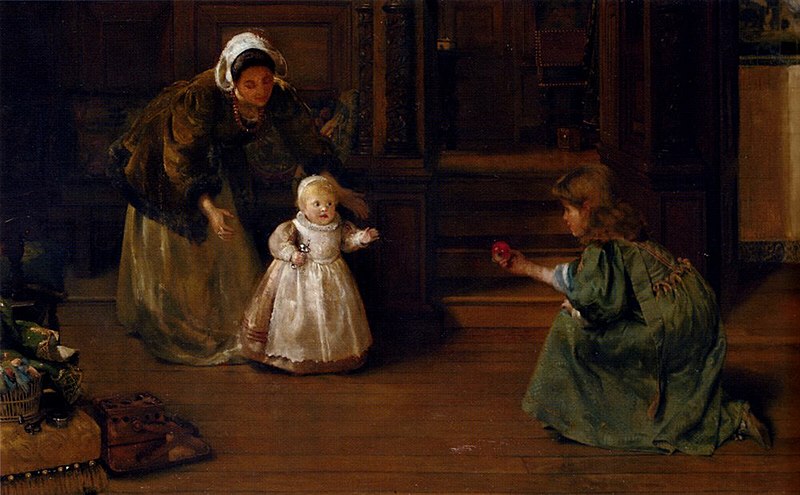
1871: The Married Women’s Property Act allows married women to own property in their own right
The Married Women’s Property Act of 1870 and its subsequent amendments, including the Married Women’s Property Act of 1871, granted married women in Britain legal rights to own and control their own property separate from their husbands.
Prior to this legislation, women often had limited legal rights within marriage and were subject to their husband’s control over their property. These legal changes marked a significant advancement in women’s rights and independence.
1876: Queen Victoria becomes the Empress of India
In 1876, Queen Victoria was proclaimed Empress of India. This title was bestowed upon her during a grand ceremony in Delhi, marking the formal assumption of the British Crown’s control over India.
It symbolized the peak of British imperial power in India and was an attempt to consolidate and legitimize British rule. Victoria’s role as Empress had a profound impact on the governance and administration of the Indian subcontinent during the late Victorian Era.
1880: Benjamin Disraeli becomes Prime Minister for the second time
Benjamin Disraeli, a prominent British statesman, served as Prime Minister for the second time in 1880. He was a central figure in the Conservative Party and played a key role in British politics during the Victorian Era.
During his time as Prime Minister, Disraeli focused on domestic and imperial issues, including social reform and strengthening the British Empire. He is known for his role in acquiring shares in the Suez Canal and for passing the 1884 Reform Act, which extended voting rights further in Britain.
1884: The Third Reform Act is passed, further extending voting rights in Britain
The Third Reform Act of 1884, also known as the Representation of the People Act 1884, was another significant piece of electoral reform in Britain during the Victorian Era. This act expanded voting rights by granting the vote to a larger segment of the male population.
It reduced property qualifications and extended suffrage to many working-class men in rural areas, further democratizing the electoral system in the United Kingdom.
1897: Queen Victoria celebrates her Diamond Jubilee, marking 60 years on the throne
Queen Victoria’s Diamond Jubilee in 1897 was a grand celebration that marked her remarkable six-decade reign as the Queen of the United Kingdom and Empress of India. It was a significant milestone and a testament to her enduring popularity.
The jubilee festivities included parades, ceremonies, and public events held both in Britain and throughout the British Empire. Victoria’s reign was a period of immense change and expansion for the empire, making the jubilee a symbol of Britain’s global influence.
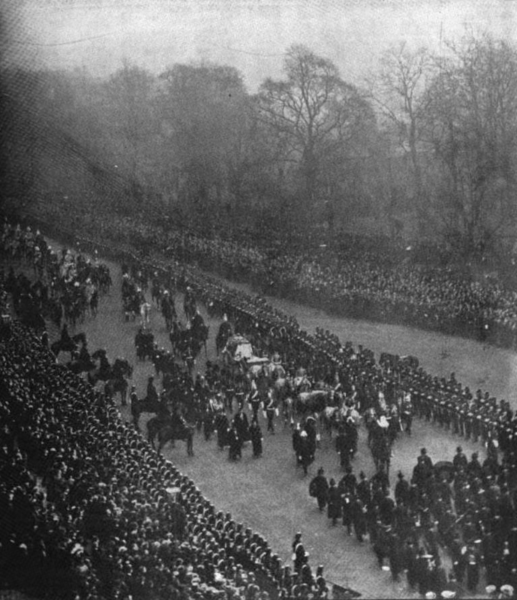
1901: Queen Victoria dies, marking the end of the Victorian Era
Queen Victoria passed away on January 22, 1901, at the age of 81, bringing an end to the Victorian Era. Her death marked a significant historical transition, as it concluded an era defined by her long reign.
Victoria’s death also marked the beginning of the Edwardian Era, with her son, King Edward VII, succeeding her to the throne. The end of the Victorian Era saw Britain as a global superpower and the height of the British Empire’s territorial expansion, but it also ushered in a new century with its own challenges and changes.
